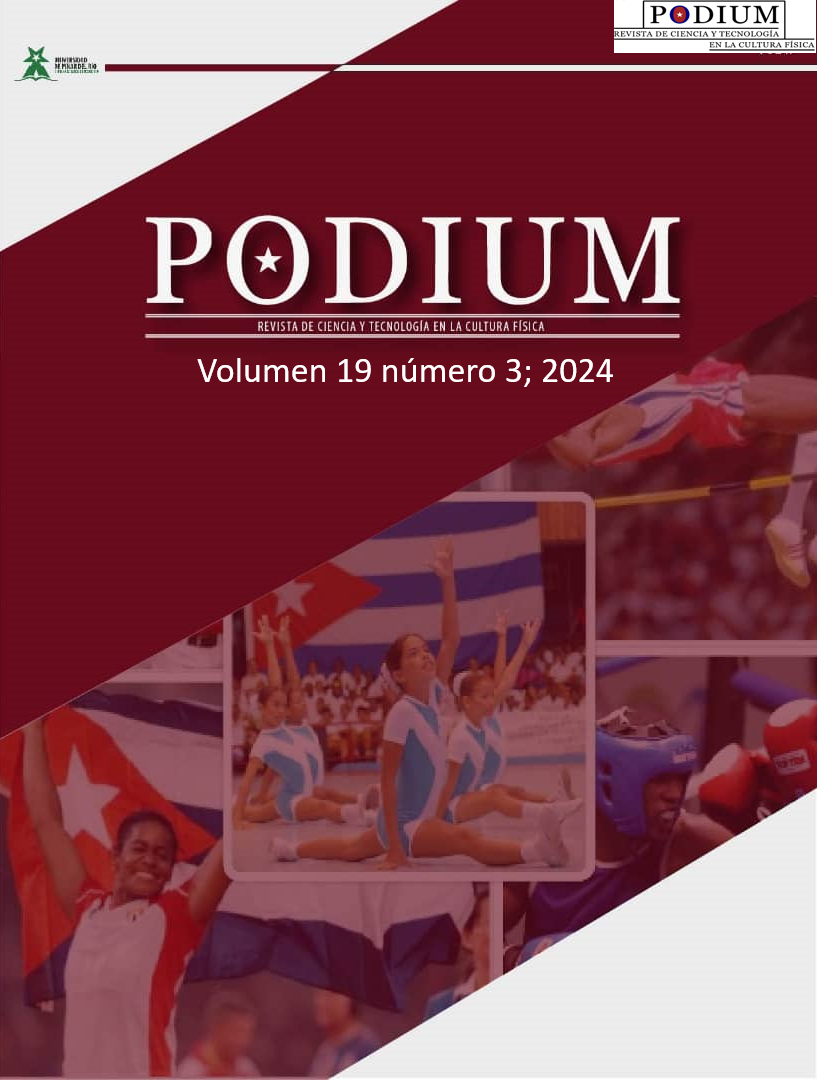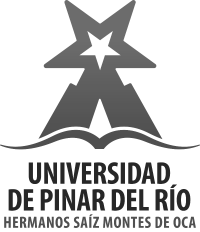Pedagogical alternative to strengthen body awareness in children with Down syndrome from Physical Education.
Main Article Content
Abstract
Body awareness allows children to learn about the body and how it handles itself in different situations. Likewise, people with Down Syndrome (DS) often need support and accompaniment to become aware of the shapes, sensations, limits, functions and movements of their body and how they feel about each motor experience. The work presented here aims to elaborate an educational strategy for the treatment of body awareness in 11-12-year-old schoolchildren with Down Syndrome in Physical Education classes. And it is contextualized in the Specialized Educational Unit Fisco Misional Don Bosco of the city of Zaruma-Ecuador. The research is based on a quantitative-qualitative approach where theoretical level methods such as historical-logical and analysis-synthesis and empirical level documentary analysis, observation and survey were used to interpret the derivations obtained at each stage of the research. The results demand an urgent pedagogical transformation for the methodological treatment in (PE) classes of children with (DS), so a curricular adaptation is presented in the Physical Education class and teachers are oriented about the treatment of body awareness and its incidence to modify the emotional and motor responses in students with (DS). The aim is for them to recognize the situation of their body in space, allowing a correct connection with the mind and providing greater balance and stability.
Downloads
Article Details

This work is licensed under a Creative Commons Attribution-NonCommercial 4.0 International License.
References
Alonzo Indarte, D. C., & Aguilar Morocho, E. K. (2020). ESTRATEGIA METODOLÓGICA INCLUSIVA PARA NIÑOS CON SÍNDROME DE ASPERGER EN LAS CLASES DE EDUCACIÓN FÍSICA. Revista Cognosis. ISSN 2588-0578, 5(1), 19. https://doi.org/10.33936/cognosis.v5i1.2182
Case, L., Ross, S., & Yun, J. (2020). Physical activity guideline compliance among a national sample of children with various developmental disabilities. Disability and Health Journal, 13(2), 100881. https://doi.org/10.1016/j.dhjo.2019.100881
Clavijo Castillo, R. G., & Bautista-Cerro, M. J. (2020). La educación inclusiva. Análisis y reflexiones en la educación superior ecuatoriana. https://www.redalyc.org/journal/4677/467761669009/html/
Corredor Ponce, Z. (2016). Curricular Adjustments as Key Factor to Ensure Inclusive Education. Educ@ción en Contexto, 2(3).
Fernández Morales, A. D. F. (2017). Síndrome de Down y la actividad física. Revista Internacional de apoyo a la inclusión, logopedia, sociedad y multiculturalidad, 3(1), Article 1. https://revistaselectronicas.ujaen.es/index.php/riai/article/view/4254
Fox, B., Moffett, G. E., Kinnison, C., Brooks, G., & Case, L. E. (2019). Physical Activity Levels of Children With Down Syndrome. Pediatric Physical Therapy, 31(1), 33-41. https://doi.org/10.1097/PEP.0000000000000556
Gámez-Calvo, L., Gamonales, J. M., León, K., & Muñoz-Jiménez, J. (2021). Influencia del equilibrio en la calidad de vida de las personas con síndrome de down en edad escolar y adulta: Revisión bibliográfica. MHSalud: Revista en Ciencias del Movimiento Humano y Salud, 19(1), 1-20. https://doi.org/10.15359/mhs.19-1.6
Haverroth, M., & Rohrbacher, F. (2020). Psicomotricida de nos padrões psicomotores de consciência corporal em crianças com síndrome de down de 1 a 3 años. Revista Inspirar Movimento y Saude, 20(3).
Hernández, A., Fernández, J. M., Álvarez, P., & López, D. (2019). Revisión de estudios sobre inclusión en educación física: Período 2014-2018. Acción Motriz, 23(1), 22-29. https://www.accionmotriz.com/index.php/accionmotriz/article/view/133I
Hernández-Sampieri, R., & Mendoza, C. (2018). Metodología de la investigación. Las rutas cuantitativa, cualitativa y mixta. Revista Universitaria Digital de Ciencias Sociales (RUDICS), 10(18), 92-95. https://doi.org/10.22201/fesc.20072236e.2019.10.18.6
Izarra, E. L. (2023). Perfil del Docente de Educación Física Una mirada desde la complejidad del siglo XXI. MENTOR revista de investigación educativa y deportiva, 2(5), Article 5. https://doi.org/10.56200/mried.v2i5.5891
Martínez Huertas, S. (2020). El yoga como herramienta para el desarrollo de la conciencia corporal y emocional. e-Motion: Revista de Educación, Motricidad e Investigación, 15, 31. https://doi.org/10.33776/remo.v0i15.4884
Naula-Izquierdo, M. C., & Jarrín-Navas, S. A. (2021). Ludomotricidad y música: Influencia en el desarrollo motor en niños con Síndrome de Down. Revista Arbitrada Interdisciplinaria Koinonía, 6(2), 649. https://doi.org/10.35381/r.k.v6i2.1258
Paredes Torres, J. J., Sánchez Banchón, I. P., & Maqueira Caraballo, G. de la C. (2024). Estrategia metodológica: Una práctica de inclusión de estudiantes con Síndrome de Down en Educación Física | Journal of Science and Research. https://revistas.utb.edu.ec/index.php/sr/article/view/3026
Picos-Salas, M. G., Canon-Buitrago, E. A., Rios-Cruz, R. D., & Brun Lomado, M. (2023). Educación física y niños con síndrome de down: Estrategias metodológicas para la labor docente. Revista de Instrumentos, Modelos e Políticas em Avaliação Educacional, 4, e023007. https://doi.org/10.51281/impa.e023007
Rojas-Avilés, F., Sandoval-Guerrero, L., & Borja-Ramos, O. (2020). Percepciones a una educación inclusiva en el Ecuador. Revista Cátedra, 3(1), 75-93. https://revistadigital.uce.edu.ec/index.php/CATEDRA/article/view/1903
Vega Gonzales, E. O., & Rivera Arellano, E. G. (2023). Actitudes hacia la educación inclusiva en docentes y futuros docentes: Una revisión de la literatura de tres instrumentos. Revista Ensayos Pedagógicos, 18(1), 153-173. https://doi.org/10.15359/rep.18-1.8
Véliz Ortega, R. H., & Mateo Sánchez, J. L. (2022). Actividades recreativas para motivar el aprendizaje de los niños con síndrome de Down. 1250 , 17(2), 557. http://podium.upr.edu.cu/index.php/podium/article/view/


